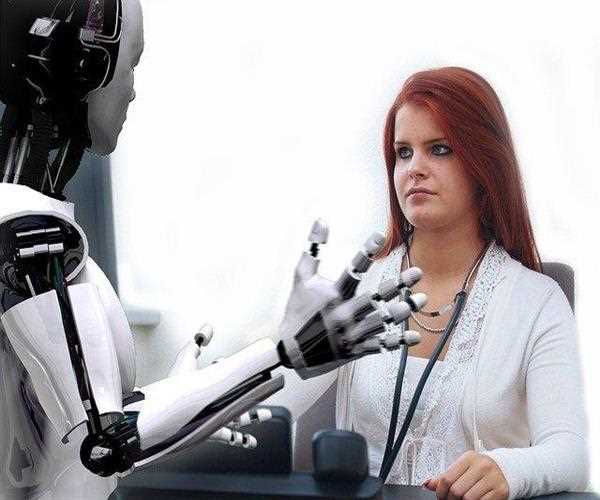Search here

26-Sep-2022
Why are robots important in Medical Field?
According to a recent report by Credence Research, the global medical robotics market is expected to grow from $7.24 billion in 2015 to $20 billion by 2023. A major driver of this growth is the demand for the use of robots in minimally invasive surgery. , especially in neurology, orthopedics, and laparoscopic surgery. As a result, various robots are being developed to perform various roles in the medical environment. Robots that specialize in treating humans include surgical robots and rehabilitation robots.
The field of robotic assistive and therapeutic devices is also
growing rapidly. Representative examples include robots that
aid in the recovery of critically ill patients such as stroke, empathic robots that
care for the elderly or those with physical or mental disabilities, and industrial robots that
perform daily tasks such as disinfecting rooms. hospital and
delivery of medical supplies. and equipment. , including
pharmaceuticals. Here are six of the
best robotic applications in medicine today.
1. Telepresence doctors use robots to help examine and treat patients in rural or remote locations, giving them
'telecommunication' across the room. 'Professionals in remote locations can
robocall to answer questions and direct therapy,' writes Dr. Bernadette Keefe, a
health and medical consultant in Chapel Hill, NC. 'Key features of
this robotic device include the ability to navigate inside the emergency room and
a sophisticated camera for physical examination.'
2. Surgical Assistant This remote-controlled
robot helps surgeons perform minimally invasive
procedures, usually. 'The ability to operate a highly sophisticated robotic arm by
sitting at a workstation outside the operating room and operating a control unit is
a hallmark of surgical robots,' says Kiff. Additional applications
of these surgical assistant robots are being developed with advanced 3DHD technology
to provide surgeons with the spatial reference they need for highly complex
operations, including better natural stereoscopic visualization combined with augmented reality.
3. Rehabilitation robots play an important role in the rehabilitation of people with disabilities, including improving mobility, strength, coordination, and quality of life. The robot can be programmed to adapt to any patient recovering from a neurological or neuromuscular disease, such as a stroke, brain or spinal cord injury, or multiple sclerosis. Virtual reality combined with rehabilitation robots can also improve balance, gait, and other motor skills.
4. Medical transport robots These robots deliver goods, medicine, and
food to patients and staff, simplifying communication between doctors, hospital staff, and patients.
'Many cars can navigate the facility by themselves,' said Manoj
Sakhi, research analyst at Tractica, a market research firm
specializing in the technology. 'However, more advanced and cost-effective indoor navigation systems based on sensor
positioning technology are needed to make the navigation functions of
vehicle robots more reliable.'
5. Robots for Sanitization and Disinfection
Due to the emergence of antibiotic-resistant bacteria and outbreaks of deadly infections
such as Ebola, many healthcare facilities are using robots to clean and disinfect surfaces.
'Currently, the main disinfection methods are ultraviolet light and hydrogen peroxide
gas,' says Sahi. 'This robot can neutralize bacteria and
virus wires in a few minutes.'
6. The maximum advantage of
the robot recipe robot -Viteza and precision are two
functions that are very important for pharmacies.
'Automated dispensing systems have advanced to the point where robots can
process powders, liquids, and highly viscous materials much faster and with
greater precision than ever before,' says Sahi.
Future model
Sophisticated robots continue to be developed for a growing number of
medical applications. For example, a research team led by Gregory
Fisher, an associate professor of mechanical engineering and robotics at Worcester Polytechnic Institute, is developing a compact, high-precision surgical robot that
works in the opening of an MRI scanner and
is electronically controlled. Systems and related software for improving prostate biopsy
accuracy.
To create a robot that could work inside an MRI scanner, Fischer and his team had to overcome several
key technical challenges. Because MRI scanners use strong magnets, the robot, including all sensors and actuators, must be made
of non-ferrous materials. 'We also had to develop
communication protocols and software interfaces to control the
robot and connect it to higher-level imaging and planning systems,' says
Fisher. 'Robots should be easy to sterilize, configure and deploy in scanners for non-technical surgical
teams. All of this resulted in large-scale systems integration
projects that required multiple hardware and software
iterations to get to this point.
Other studies combine virtual reality with recovery robots to increase the range of
therapeutic exercises and increase the motivation and effectiveness of physical
therapy. Exciting discoveries are being made with nanoparticles and nanomaterials. For example, nanoparticles can
cross the 'blood-brain barrier'. In the future, nanodevices
may be able to carry 'therapeutic payloads' of drugs that can be injected into the body and automatically
directed to specific target sites on the body.
A recordable, broadband-enabled digital device that
uses wireless technology to monitor internal drug reactions
is coming soon.
'Existing technologies combined with new methods improve the efficiency of healthcare
operations,' says Keef. 'At the same time, new robotic technologies are being
used to make exciting advances in the medical
field.'

Student
An inquisitive individual with a great interest in the subjectivity of human experiences, behavior, and the complexity of the human mind. Enthusiased to learn, volunteer, and participate. Always driven by the motive to make a difference in the sphere of mental health - and normalize seeking help through a sensitive and empathetic approach
Join Our Newsletter
Subscribe to our newsletter to receive emails about new views posts, releases and updates.
Copyright 2010 - 2025 MindStick Software Pvt. Ltd. All Rights Reserved Privacy Policy | Terms & Conditions | Cookie Policy